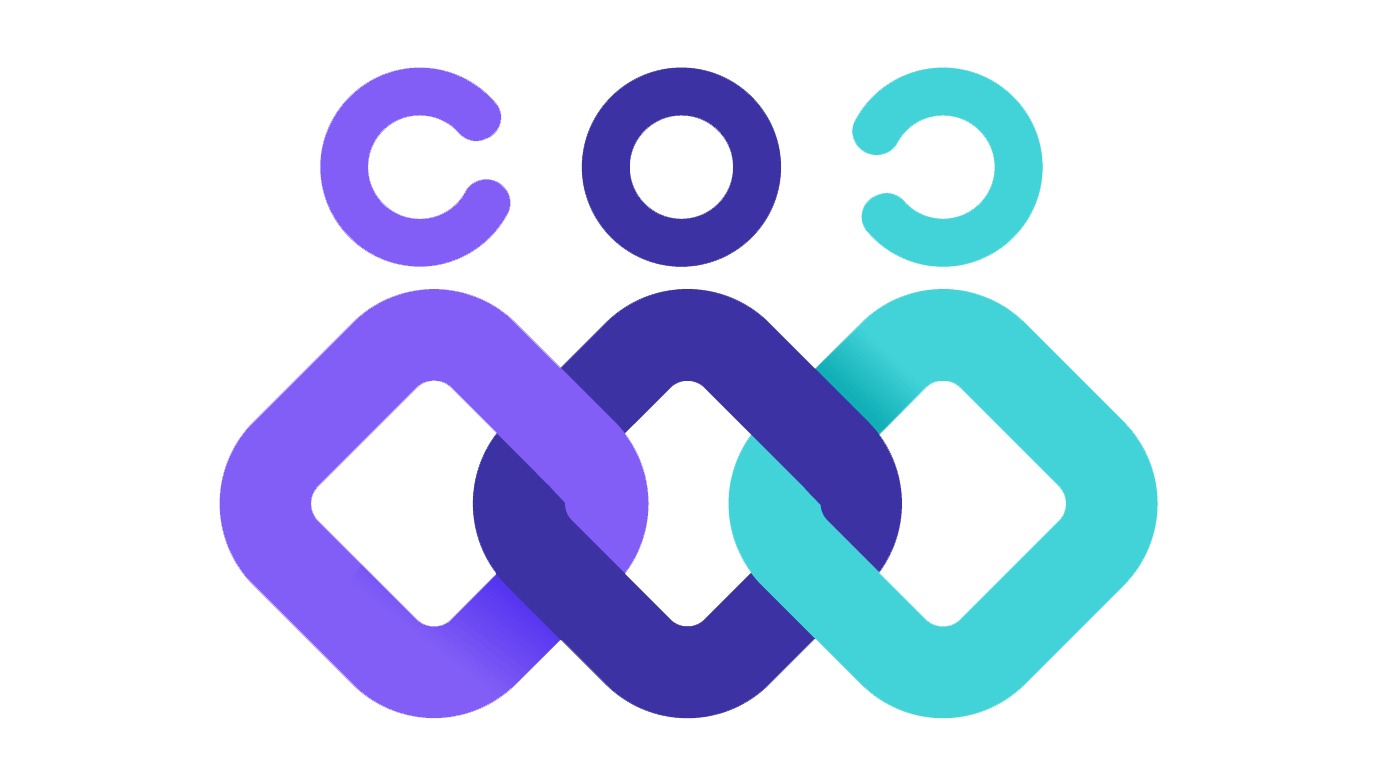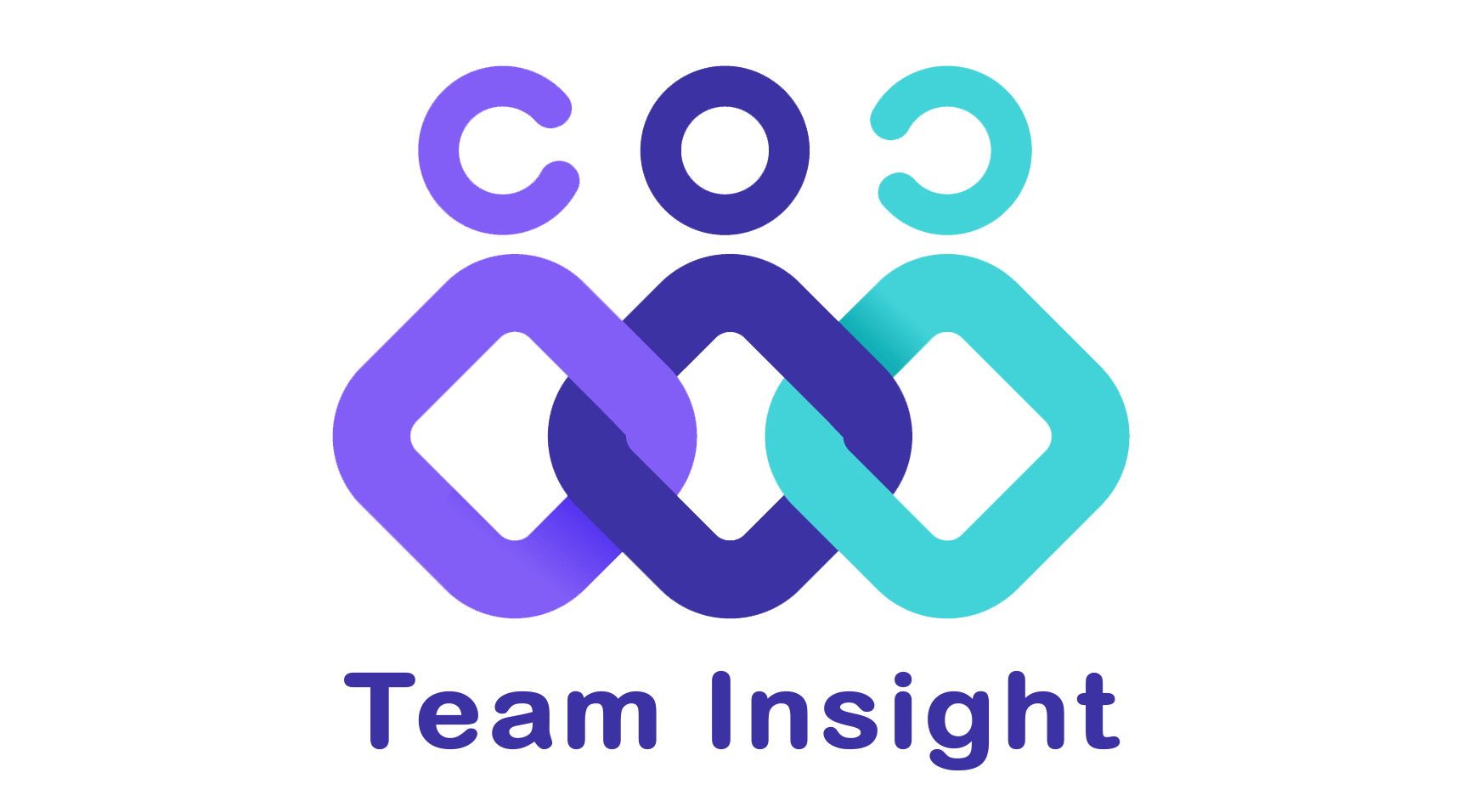- Home
- Product
-
Product Overview
Team Insight combines performance management, recognition, and local rewards in a single loop — so teams grow fairly, stay engaged, and feel valued.
PRODUCT
Employee Performance Management Software
Tools to improve performance and growth tracking.
Employee Recognition & Rewards Software
Build positivity by valuing daily wins.
Employee Engagement Software for SMEs
Drive productivity with clear access and accurate tracking.
OKR & KPI Software for Small Teams
Tools to improve performance and growth tracking.
-
- Resources
- Capture leads and make buying easySed ut perspiciatis unde omnis iste natus error sit voluptatem accusantium doloremque laudantium, totam aperiam, eaquecy epsa abillo inventore veritatis architecto beatae
- Complete documentation
- Working materials in Figma
- 100GB cloud storage
- 500 team members
- Complete documentation
- Working materials in Figma
- 100GB cloud storage
- 500 team members
 Capture leads and make buying easySed ut perspiciatis unde omnis iste natus error sit voluptatem accusantium doloremque laudantium, totam aperiam, eaquecy epsa abillo inventore veritatis architecto beatae
Capture leads and make buying easySed ut perspiciatis unde omnis iste natus error sit voluptatem accusantium doloremque laudantium, totam aperiam, eaquecy epsa abillo inventore veritatis architecto beatae- Complete documentation
- Working materials in Figma
- 100GB cloud storage
- 500 team members
- Complete documentation
- Working materials in Figma
- 100GB cloud storage
- 500 team members
Capture leads and make buying easySed ut perspiciatis unde omnis iste natus error sit voluptatem accusantium doloremque laudantium, totam aperiam, eaquecy epsa abillo inventore veritatis architecto beatae- Complete documentation
- Working materials in Figma
- 100GB cloud storage
- 500 team members
- Complete documentation
- Working materials in Figma
- 100GB cloud storage
- 500 team members
 Capture leads and make buying easySed ut perspiciatis unde omnis iste natus error sit voluptatem accusantium doloremque laudantium, totam aperiam, eaquecy epsa abillo inventore veritatis architecto beatae
Capture leads and make buying easySed ut perspiciatis unde omnis iste natus error sit voluptatem accusantium doloremque laudantium, totam aperiam, eaquecy epsa abillo inventore veritatis architecto beatae- Complete documentation
- Working materials in Figma
- 100GB cloud storage
- 500 team members
Latest Product Updates
Strong Signals
Accelerate Your Monitoring Efforts with ‘Team Insight,’ an AI-Powered Solution.
Smart Ideation
Enhance Your Creative Process with GenAI-Powered Ideation.
Knowledge Hub: Articles, Webinars...Explore our blog, webinars, and case studies to stay informed. Visit the Help Center for all the resources you needContent summary: Discover insights and expert advice through our blog to stay updated with the latest trends and solutions.
Discover insights and expert advice through our blog to stay updated with the latest trends and solutions.
Join our webinars for expert-led discussions and real-time learning from industry leaders.

Explore our case studies to see how our solutions drive success in real-world scenarios.

Visit our Help Center for quick answers, resources, and support to assist you every step of the way.
-
- Success Stories
- Login
- Pricing
- Our Team
- Company
-
A Story of Growth, Trust, and Vision
Our journey is built on a commitment to empowering people and increasing employee productivity. By fostering trust and innovation, we aim to create a work environment where growth and success go hand in hand.
About Us: A team driven by innovation, focused on growth and productivity.
A team driven by innovation, focused on growth and productivity.
Contact us with any questions or feedback. Let’s boost productivity together.
-

Why Aligning Rewards with OKRs Often Fails
In many growing organizations, OKRs have become the go-to framework for goal alignment, transparency, and performance focus. At the same time, leaders are under pressure to keep teams motivated and engaged through fair recognition and incentive systems.
Naturally, the question arises — should we align rewards with OKRs to strengthen motivation and performance?
At first, it sounds logical. If OKRs define what matters most for business success, then linking them to recognition or compensation should, in theory, reinforce performance. However, most companies that try to align rewards with OKRs quickly realize it’s not that simple.
When done wrong, this alignment can undermine intrinsic motivation, distort priorities, and lead to short-term “gaming” behaviors that damage long-term results.
The core purpose of OKRs is learning and alignment, not evaluation or judgment. They work best when employees feel free to set ambitious goals — even if that means not reaching 100%. Yet, when a reward system directly depends on OKR scores, people start setting safe goals or inflating their results to secure bonuses.
This shifts the OKR process from a growth mindset to a compliance mindset. Instead of driving engagement, such systems often destroy it.
That’s why the key question isn’t “Should we align rewards with OKRs?” but “How can we do it without killing motivation?”
A modern approach focuses on linking rewards to the behaviors that make OKRs successful — collaboration, transparency, and continuous improvement — rather than simply the numeric completion rate.
Companies that get this right use recognition programs that highlight effort, progress, and learning, not just final results. Tools like Employee Recognition & Rewards Software make this possible by helping managers celebrate small wins and reinforce the right habits consistently across teams.
The Science of Motivation and Why OKRs Matter
Before exploring how to effectively align rewards with OKRs, it’s essential to understand what truly drives people at work. Motivation isn’t just about money or bonuses — it’s about meaning, mastery, and momentum.
When employees feel trusted, connected to a larger purpose, and empowered to grow, they naturally push harder toward company goals.
Psychologists like Edward Deci and Richard Ryan describe this through the Self-Determination Theory (SDT) — which identifies three core human needs that drive motivation:
Autonomy: the freedom to choose how to achieve a goal
Mastery: the opportunity to build and demonstrate competence
Purpose: the feeling that one’s work matters
OKRs, when implemented properly, directly support these drivers. They provide clarity (purpose), freedom in approach (autonomy), and measurable progress (mastery). That’s what makes them such a powerful tool for performance management.
However, when organizations rush to align rewards with OKRs without considering these psychological foundations, they risk undermining all three motivators.
For example, if a team’s bonus depends entirely on hitting every Key Result, employees may stop experimenting or setting ambitious stretch goals. Instead of taking calculated risks, they focus on guaranteed wins. The organization ends up with a culture of compliance — not innovation.
A better approach is to design reward systems that reinforce intrinsic motivation, not replace it. That means recognizing behaviors that reflect ownership, initiative, and collaboration, even when results are still in progress.
By celebrating progress instead of perfection, leaders encourage continuous learning and psychological safety — the true foundation of sustained performance.
Another reason to carefully align rewards with OKRs is data transparency. OKRs make performance visible at every level — individual, team, and organizational. When rewards are tied to shared visibility rather than hidden metrics, trust improves. Employees see how their efforts contribute to larger outcomes, and recognition feels fairer and more objective.
In short, motivation grows when people feel they’re playing a meaningful game with clear rules — not chasing arbitrary numbers. OKRs set the field. Rewards, when designed right, become the applause that keeps the game exciting, not the scoreboard that kills the joy.

The Dangers of Perverse Incentives
When companies first try to align rewards with OKRs, one of the most common traps they fall into is creating perverse incentives — systems that unintentionally encourage the wrong behavior.
What begins as a well-intentioned plan to motivate employees can quickly turn into a performance game where people chase bonuses, not impact. If organizations fail to align rewards with OKRs effectively, individuals may adjust their actions to maximize rewards rather than create real value.
For instance, if a sales team’s OKR is tied to quarterly revenue and rewards are linked directly to that figure, they might prioritize closing easy deals over nurturing long-term customer relationships, showing how misaligned reward systems can undermine objectives.
On paper, the OKR looks “achieved.” In reality, the business loses quality, trust, and retention. This demonstrates why it’s critical to align rewards with OKRs in a way that encourages the right behaviors.
The same dynamic can occur in product or operations teams. When leaders fail to properly align rewards with OKRs, employees often play it safe, set unambitious goals, or hide issues to protect their numbers.
What was meant to encourage ownership instead promotes fear and defensiveness. As a result, OKRs lose their purpose as a learning framework and become just another performance scoring system.
The deeper issue here is psychological safety. OKRs are meant to inspire stretch thinking — the belief that it’s okay to aim high and fall slightly short if you’ve learned and grown. Without careful design, even attempts to align rewards with OKRs can make teams fear failure. Transparency declines, and teams stop sharing honest progress or blockers because doing so might reduce their reward potential.
In some organizations, this has led to a phenomenon called “OKR gaming” — where objectives are written to be easily achievable, or key results are manipulated to report success. Poorly implemented reward alignment not only corrupts the OKR process but also erodes trust between teams and management.
Avoiding perverse incentives doesn’t mean avoiding rewards altogether. It means designing systems to align rewards with OKRs while supporting the spirit of OKRs — learning, collaboration, and continuous improvement — rather than punishing risk-taking.
A smarter approach is to use recognition mechanisms that highlight effort and growth, not just outcomes. When companies successfully align rewards with OKRs, they build a culture where ambition is celebrated and learning is rewarded. Done poorly, failure to properly align rewards with OKRs results in a culture of caution — and no one takes the bold actions that truly drive performance.
OKRs vs KPIs: What to Reward, What to Measure, and Why It Matters
To successfully align rewards with OKRs without damaging motivation, organizations need a system built on transparency, fairness, and behavioral reinforcement — not just numbers.
The goal isn’t to make OKRs another performance-based compensation formula. It’s to use them as a feedback engine that helps managers recognize the right kind of effort, learning, and collaboration across teams.
1. Reward Progress, Not Just Outcomes
When rewards depend solely on results, employees naturally focus on what’s easiest to achieve. Instead, emphasize progress recognition — celebrating milestones, learning curves, and cross-team contributions that move OKRs forward.
For example, a team that misses a stretch OKR but innovates a new process should still be recognized. This reinforces experimentation and growth rather than punishing ambition.
Many high-performing organizations now use continuous recognition tools to make this visible — letting peers and managers give small, frequent shout-outs that align with company OKRs.
2. Separate Learning OKRs from Compensation
To protect the learning purpose of OKRs, keep developmental OKRs separate from incentive-linked OKRs.
Developmental OKRs (like skill expansion, process improvement, or collaboration) should remain free from direct financial impact. This ensures employees take bold, creative risks.
Meanwhile, incentive-linked OKRs can focus on stable business metrics like customer satisfaction, revenue growth, or delivery quality — but always with shared accountability, not individual pressure.
This dual structure helps you align rewards with OKRs while maintaining psychological safety and a growth culture.
3. Reinforce Values Through Recognition
When recognition mirrors company values — transparency, teamwork, innovation — employees see that the organization truly rewards what it preaches.
For instance, linking OKR progress badges or recognition messages to company values encourages people to act in alignment with those principles.
A simple “Thank you for making our Q3 OKR transparent and helping others track progress” message can drive more behavioral alignment than a cash bonus ever could.
Tools like Employee Recognition & Rewards Software help scale these positive behaviors by tracking engagement and reward data across teams, ensuring fairness and visibility.
4. Use Peer-to-Peer Input
Traditional reward systems rely solely on manager feedback, which often introduces bias or incomplete data.
In an OKR-driven culture, teams should also participate in recognizing peers who contributed meaningfully to shared objectives.
Peer recognition reduces the risk of favoritism and highlights collaborative effort — a key factor when trying to align rewards with OKRs ethically.
5. Make Rewards Predictable, Not Political
Unclear or inconsistent reward practices can quickly undermine trust. Employees need to understand how rewards are earned and why they’re fair.
Create clear, documented guidelines that show:
Which OKR outcomes or behaviors trigger recognition
What forms of reward are possible (monetary, symbolic, developmental)
Who decides on rewards and how feedback is collected
When everyone understands the rules, the system feels merit-based — not arbitrary or political.
6. Include Non-Monetary Incentives
Not every reward has to be financial. In fact, research consistently shows that non-monetary recognition — like growth opportunities, learning budgets, or flexible work privileges — often has a longer-term motivational effect.
Linking these to OKR milestones encourages teams to pursue ambitious goals without fearing failure. It transforms OKRs into a framework for both achievement and personal development.
7. Keep Feedback Continuous
Instead of waiting for quarterly OKR reviews, integrate feedback and recognition throughout the OKR cycle.
This keeps performance conversations alive, ensures alignment stays strong, and prevents surprises when rewards are discussed.
Modern OKR & KPI Software for Small Teams automates this by connecting progress tracking with lightweight recognition features — keeping both motivation and accountability visible in real time.
Ultimately, the healthiest way to align rewards with OKRs is to ensure the reward system reinforces the why behind your OKRs — not just the what.
When rewards recognize progress, collaboration, and learning, they amplify the impact of OKRs. When they only celebrate outcomes, they kill the curiosity and ambition that OKRs were designed to inspire.

Designing Healthy OKR-Linked Reward Systems
To successfully align rewards with OKRs without damaging motivation, organizations need a system built on transparency, fairness, and behavioral reinforcement — not just numbers.
The goal isn’t to make OKRs another performance-based compensation formula. It’s to use them as a feedback engine that helps managers recognize the right kind of effort, learning, and collaboration across teams.
1. Reward Progress, Not Just Outcomes
When rewards depend solely on results, employees naturally focus on what’s easiest to achieve. Instead, emphasize progress recognition — celebrating milestones, learning curves, and cross-team contributions that move OKRs forward.
For example, a team that misses a stretch OKR but innovates a new process should still be recognized. This reinforces experimentation and growth rather than punishing ambition.
Many high-performing organizations now use continuous recognition tools to make this visible — letting peers and managers give small, frequent shout-outs that align with company OKRs.
2. Separate Learning OKRs from Compensation
To protect the learning purpose of OKRs, keep developmental OKRs separate from incentive-linked OKRs.
Developmental OKRs (like skill expansion, process improvement, or collaboration) should remain free from direct financial impact. This ensures employees take bold, creative risks.
Meanwhile, incentive-linked OKRs can focus on stable business metrics like customer satisfaction, revenue growth, or delivery quality — but always with shared accountability, not individual pressure.
This dual structure helps you align rewards with OKRs while maintaining psychological safety and a growth culture.
3. Reinforce Values Through Recognition
When recognition mirrors company values — transparency, teamwork, innovation — employees see that the organization truly rewards what it preaches.
For instance, linking OKR progress badges or recognition messages to company values encourages people to act in alignment with those principles.
A simple “Thank you for making our Q3 OKR transparent and helping others track progress” message can drive more behavioral alignment than a cash bonus ever could.
Tools like Employee Recognition & Rewards Software help scale these positive behaviors by tracking engagement and reward data across teams, ensuring fairness and visibility.
4. Use Peer-to-Peer Input
Traditional reward systems rely solely on manager feedback, which often introduces bias or incomplete data.
In an OKR-driven culture, teams should also participate in recognizing peers who contributed meaningfully to shared objectives.
Peer recognition reduces the risk of favoritism and highlights collaborative effort — a key factor when trying to align rewards with OKRs ethically.
5. Make Rewards Predictable, Not Political
Unclear or inconsistent reward practices can quickly undermine trust. Employees need to understand how rewards are earned and why they’re fair.
Create clear, documented guidelines that show:
Which OKR outcomes or behaviors trigger recognition
What forms of reward are possible (monetary, symbolic, developmental)
Who decides on rewards and how feedback is collected
When everyone understands the rules, the system feels merit-based — not arbitrary or political.
6. Include Non-Monetary Incentives
Not every reward has to be financial. In fact, research consistently shows that non-monetary recognition — like growth opportunities, learning budgets, or flexible work privileges — often has a longer-term motivational effect.
Linking these to OKR milestones encourages teams to pursue ambitious goals without fearing failure. It transforms OKRs into a framework for both achievement and personal development.
7. Keep Feedback Continuous
Instead of waiting for quarterly OKR reviews, integrate feedback and recognition throughout the OKR cycle.
This keeps performance conversations alive, ensures alignment stays strong, and prevents surprises when rewards are discussed.
Modern OKR & KPI Software for Small Teams automates this by connecting progress tracking with lightweight recognition features — keeping both motivation and accountability visible in real time.
Ultimately, the healthiest way to align rewards with OKRs is to ensure the reward system reinforces the why behind your OKRs — not just the what.
When rewards recognize progress, collaboration, and learning, they amplify the impact of OKRs. When they only celebrate outcomes, they kill the curiosity and ambition that OKRs were designed to inspire.

Monitoring & Iterating Reward Alignment
Even the most thoughtfully designed reward system can lose its effectiveness over time. Business priorities shift, teams evolve, and what motivates people today may not work tomorrow.
That’s why organizations that successfully align rewards with OKRs treat the process as dynamic, not fixed. They constantly monitor results, collect feedback, and refine their approach to keep both performance and engagement in sync.
1. Measure What Really Matters
The first step is to track whether your current reward system is truly reinforcing OKR-driven behavior. Don’t just measure reward distribution — measure its impact.
Ask yourself:
Are teams setting more ambitious and meaningful OKRs?
Has collaboration improved across departments?
Do employees feel the reward process is transparent and fair?
These questions reveal whether your reward system supports or undermines motivation. You can use engagement surveys, performance analytics, and feedback tools to measure these outcomes consistently.
For example, tracking peer recognition frequency or OKR progress transparency can help detect early signs of disengagement or gaming behavior.
2. Create Feedback Loops at Every Level
A healthy feedback loop ensures your reward system evolves with your culture. Managers, team leads, and employees should all have channels to share insights about what’s working — and what’s not.
Monthly or quarterly retrospectives are ideal moments to discuss how well rewards align with OKR principles.
Encourage employees to speak openly about whether they feel recognized for the right reasons. This feedback can uncover subtle cultural issues — like reward bias or lack of visibility — before they become bigger problems.
3. Analyze for Fairness and Bias
Even in well-intentioned systems, unconscious bias can creep in. Some teams or individuals may receive more recognition simply because their work is more visible or easier to measure.
To align rewards with OKRs fairly, data analysis is key. Compare recognition and reward distribution across teams, roles, and demographics.
Look for patterns like:
Repetitive recognition of the same individuals
Disparities in reward frequency between teams
Imbalances between visible and behind-the-scenes contributors
Modern analytics tools can make this process effortless, helping HR and leadership detect inequities and maintain credibility in the reward system.
4. Iterate Based on Insights
When gaps appear, act fast. Adjust your reward criteria, improve communication, or fine-tune OKR-setting practices to restore balance.
For instance, if employees are setting safe goals to secure bonuses, reintroduce stretch goals and adjust how rewards are granted — perhaps by emphasizing teamwork and innovation instead of completion rates.
Iteration should be a normal part of your OKR cycle. Just as OKRs are reviewed and updated quarterly, your reward alignment should evolve alongside them.
5. Communicate Changes Transparently
Nothing erodes trust faster than silent changes to how rewards are handled. If you modify policies, make sure to explain why the change was made and how it benefits both the organization and employees.
Transparency turns policy adjustments into learning moments rather than disappointments.
When leaders openly share the reasoning behind changes, employees see that reward alignment isn’t about control — it’s about creating a fair and motivating system for everyone.
6. Leverage Technology for Continuous Learning
Digital platforms can help organizations monitor the health of their OKR-linked reward systems in real time.
For example, OKR & KPI Software for Small Teams integrates recognition, feedback, and goal-tracking features — giving leaders visibility into both progress and motivation.
When used correctly, these tools make it easier to align rewards with OKRs continuously, ensuring that recognition stays consistent with company goals and values.
A reward system should never be static. Just as OKRs encourage learning and adaptation, your recognition strategy should do the same.
The best organizations understand that motivation isn’t a one-time project — it’s a living ecosystem. By constantly monitoring, listening, and adjusting, you ensure that your OKR and reward alignment remains both fair and inspiring.
Real-World Models: How Leading Companies Align Rewards with OKRs
Theory is essential — but what truly drives learning are examples from companies that have successfully learned how to align rewards with OKRs without damaging motivation.
Let’s look at how some leading organizations have translated this concept into practice across different scales and cultures.
1. Atlassian — Rewarding Learning Over Perfection
Atlassian, known for its collaborative software products, takes a unique approach to performance and recognition.
Instead of tying compensation directly to OKR completion rates, the company celebrates learning as much as achievement.
When a team sets ambitious OKRs and falls short but shares valuable insights, leadership recognizes that outcome as a success — not a failure.
Employees are rewarded through professional development opportunities, public recognition, or internal showcases that highlight innovation.
This model reinforces the belief that aligning rewards with OKRs isn’t about punishing misses, but about celebrating stretch thinking and growth.
As a result, teams feel safe to experiment, and innovation continues to thrive.
2. Spotify — Using Dialogue and Trust to Drive Motivation
Spotify uses OKRs to maintain focus and alignment across its many agile squads.
But instead of connecting bonuses or promotions directly to OKR outcomes, Spotify emphasizes qualitative evaluation through continuous dialogue.
Managers discuss OKRs in regular check-ins — not to assess results numerically, but to understand how teams prioritized, collaborated, and adapted.
This approach builds trust and keeps employees motivated intrinsically rather than through rigid incentives.
Spotify’s success shows that when companies align rewards with OKRs by emphasizing transparency and communication, they reinforce autonomy — a key driver of intrinsic motivation.
3. Google — Keeping OKRs and Compensation Separate
Google is often cited as the pioneer of OKR methodology, and its stance on rewards remains clear: OKRs are for alignment and learning, not evaluation.
While bonuses and promotions at Google are influenced by overall performance and company results, they are not directly tied to OKR completion rates.
This separation ensures employees continue to set bold, stretch goals without fear of penalty for missing them.
The company still uses robust recognition programs to celebrate contributions and progress, ensuring motivation remains high while keeping the align rewards with OKRs principle indirect but effective.
4. SME Example — A Balanced Hybrid Model
A mid-sized tech company with around 150 employees wanted to create a stronger link between motivation and strategic alignment.
Initially, tying bonuses to OKR completion led to cautious goal-setting. After analyzing employee feedback, they shifted to a hybrid reward model.
Here’s how it worked:
40% of rewards were tied to measurable KPIs (e.g., sales targets, uptime).
60% came from qualitative OKR-related factors — collaboration, initiative, and progress toward stretch goals.
Using OKR & KPI Software for Small Teams, they tracked OKR progress transparently and enabled peer recognition for cross-team contributions.
After three quarters, the company saw a 20% rise in engagement and improved interdepartmental alignment.
This case proves that smaller organizations can successfully align rewards with OKRs without complex systems — as long as they balance data with human insight.
5. The Common Thread: Culture Before Compensation
Across all these models, one truth stands out: companies that succeed in aligning rewards with OKRs focus on culture first, compensation second.
They build psychological safety, transparency, and a shared understanding of purpose — and then design rewards that amplify those values.
In each case, recognition became a form of storytelling: highlighting how individuals and teams contributed to collective growth.
When done right, the reward system becomes not just a motivator, but a mirror — reflecting the company’s values back to its people.
The takeaway?
You don’t have to choose between ambition and fairness. You just need to align rewards with OKRs in a way that protects curiosity, celebrates effort, and reinforces collaboration.
Once your team sees that bold thinking and transparency are rewarded — not punished — motivation becomes sustainable, and OKRs become a living part of your culture.

The 5C Framework for Designing Healthy Reward–OKR Systems
Once you decide to align rewards with OKRs, the next challenge is designing a structure that motivates performance without undermining trust or intrinsic motivation.
Most companies struggle not because they lack good intentions — but because their reward systems send the wrong signals.
To avoid this, modern HR and performance leaders use the 5C Framework — a simple, practical model that ensures incentives stay healthy, transparent, and aligned with OKR principles.
The five elements — Clarity, Consistency, Collaboration, Contribution, and Culture Fit — form the foundation for any sustainable reward–OKR alignment.
Let’s explore each “C” in detail.
1. Clarity — Make the Rules Transparent
Nothing kills motivation faster than confusion.
Employees must clearly understand how rewards are linked to OKRs — and, equally important, how they’re not linked.
When leaders openly communicate the intent behind their incentive design, it builds psychological safety and eliminates suspicion.
Clarity makes it easier for teams to focus on results instead of politics.
Make it explicit: the goal of aligning rewards with OKRs is to recognize progress and learning, not to penalize risk-taking.
The more transparent your criteria, the more confident employees become in setting bold, meaningful goals.
2. Consistency — Avoid Moving Targets
Inconsistent rules are the silent killer of motivation.
If your approach to rewards or OKR evaluation shifts every quarter, employees will stop taking the process seriously.
Consistency allows people to plan long-term and stretch without fear that the reward logic will suddenly change.
It also protects against favoritism and bias.
Establish a stable rhythm: review OKRs quarterly, apply the same evaluation principles each cycle, and keep communication channels open.
A consistent process reinforces fairness — the backbone of any effort to align rewards with OKRs effectively.
3. Collaboration — Reward Shared Success
The best OKRs are cross-functional.
If you only reward individual achievement, you risk creating silos and rivalry between teams.
Instead, reward collective progress.
Celebrate the moments when teams support each other, share knowledge, or remove blockers together.
Modern platforms like Employee Recognition & Rewards Software make this easy by enabling peer-to-peer recognition for collaboration, transparency, and mutual success.
By rewarding teamwork, you reinforce one of the strongest predictors of sustainable motivation: social trust.
When companies align rewards with OKRs through collaboration, performance becomes a team sport — not a zero-sum game.
4. Contribution — Link Rewards to Real Impact
Not all activity creates value.
That’s why rewards should focus on contribution — the measurable or observable impact of work on company goals.
Link recognition to how effectively someone’s work advanced OKR outcomes, improved efficiency, or strengthened alignment.
This helps teams see a direct connection between effort and business impact.
For example, instead of rewarding the number of features shipped, recognize the feature that most improved customer satisfaction — because that’s what truly moves the OKR forward.
Contribution-based recognition ensures that employees stay aligned with strategic priorities while feeling genuinely valued for their work.
5. Culture Fit — Reinforce Values Through Incentives
Every reward tells a story about what your company values.
If your OKRs promote learning, agility, and transparency — but your bonuses reward only numbers — the result is cultural dissonance.
Rewards should reinforce the same values that make OKRs effective.
That means appreciating curiosity, innovation, and integrity just as much as hitting a target.
The healthiest organizations use recognition moments as cultural reinforcement — tiny reminders that “this is who we are.”
By ensuring culture fit, you turn reward programs into engines for engagement and long-term alignment.
Bringing It All Together
When you align rewards with OKRs using the 5C Framework, you transform incentives from a management tool into a motivation engine.
Clarity ensures understanding.
Consistency builds fairness.
Collaboration strengthens teams.
Contribution connects effort to impact.
Culture Fit aligns recognition with values.
Together, these principles make sure rewards don’t distort OKRs — they enhance them.
The result is a system where recognition fuels purpose, performance feels fair, and motivation becomes self-sustaining.
Common Mistakes When Linking OKRs and Rewards
Even with the best intentions, many leaders make critical mistakes when they first try to align rewards with OKRs.
These errors often come from a misunderstanding of what OKRs are meant to do — they’re tools for learning and alignment, not direct performance scoring.
Recognizing these pitfalls early helps organizations protect motivation and maintain trust while improving performance.
Let’s look at the most common mistakes — and how to avoid them.
1. Tying Rewards Directly to OKR Completion Percentages
This is the most dangerous and widespread mistake.
When employees know their bonuses depend on hitting a specific OKR percentage — say 80% or higher — they’ll naturally choose safe goals instead of ambitious ones.
The purpose of OKRs is to stretch teams beyond their comfort zones, not to punish them for falling short.
If people fear losing rewards, they stop taking risks, stop experimenting, and start optimizing for easy wins.
A better approach is to reward engagement with the OKR process — the effort, transparency, and collaboration shown while pursuing those goals — not just the final score.
When you align rewards with OKRs this way, you maintain ambition while keeping motivation authentic.
2. Treating OKRs as Individual Scorecards
Another common mistake is using OKRs to measure individual performance.
OKRs are designed to drive alignment across teams, not to rank employees against one another.
When OKRs are treated as personal scorecards, collaboration suffers.
People start competing internally, withholding information, or prioritizing their own metrics over shared outcomes.
OKRs work best when they represent collective accountability.
Rewarding shared progress — instead of isolated wins — builds trust and cross-functional alignment.
3. Ignoring the “How” Behind Results
When companies focus only on outcomes (“Did we hit the target?”) instead of how those outcomes were achieved, they send the wrong cultural signal.
If an employee reaches their OKR by burning out the team or cutting corners, that’s not real success.
Healthy organizations reward both results and behavior.
When you align rewards with OKRs, make sure recognition includes qualitative input — feedback from peers, customers, or cross-functional partners.
This ensures that success reflects integrity, teamwork, and sustainable performance.
4. Failing to Communicate the Purpose of Alignment
If employees don’t understand why rewards are being connected to OKRs, they’ll assume it’s another management control mechanism.
Lack of clarity breeds resistance and cynicism.
Leaders should consistently communicate that the goal of reward alignment is to reinforce learning, focus, and growth — not to monitor or punish.
Transparency in intent builds trust and turns OKRs into a shared motivational framework instead of a compliance exercise.
5. Neglecting Continuous Feedback and Adjustment
The relationship between OKRs and rewards shouldn’t be static.
As company priorities, culture, or team maturity evolve, your reward design should evolve too.
Organizations that fail to regularly review their system risk reinforcing outdated behaviors or creating hidden biases.
Use quarterly retrospectives to ask:
Did our reward model encourage stretch thinking?
Did people feel safe to share progress openly?
Were rewards perceived as fair and transparent?
Adjust based on this feedback.
This keeps your alignment fresh, fair, and effective over time.
Avoiding These Mistakes Builds Trust and Long-Term Motivation
When you align rewards with OKRs the wrong way, motivation becomes transactional and short-lived.
But when you design it thoughtfully — focusing on progress, collaboration, and learning — you build intrinsic commitment that lasts far beyond any bonus cycle.
Avoiding these common mistakes transforms OKRs from a management process into a cultural habit.
Your teams stop asking, “What’s my reward for doing this?” and start asking, “How can we make the biggest impact together?”
That shift — from fear to ownership — is where the true value of reward alignment begins.

9. Step-by-Step Guide to Align Rewards with OKRs
Designing a fair and motivating system to align rewards with OKRs takes more than linking bonuses to goal completion.
It requires a structured approach — one that protects intrinsic motivation while reinforcing accountability and performance.
Here’s a proven, step-by-step method to do it right.
Step 1: Define the Purpose of Alignment
Before you touch incentives or KPIs, clarify why you want to align rewards with OKRs.
Is it to increase focus on strategic priorities? Encourage transparency? Or boost engagement?
Your “why” determines the structure of your reward system.
If your goal is to motivate innovation, for example, financial rewards alone won’t work — you’ll need recognition that celebrates experimentation and learning.
A well-defined purpose also helps communicate to employees that this isn’t just another performance-control mechanism.
Step 2: Separate Evaluation from Learning
The foundation of a healthy OKR system is psychological safety.
To maintain it, make a clear distinction between OKR reviews and performance evaluations.
OKRs should be a space for reflection and improvement — not judgment.
When employees know their OKRs are being used purely for learning, they set bolder and more meaningful goals.
Use one process for developmental feedback and another for compensation discussions.
That separation keeps your efforts to align rewards with OKRs transparent and trustworthy.
Step 3: Identify the Right Reward Triggers
Not every OKR milestone deserves a financial reward.
Instead, identify key behavioral and performance triggers that align with your company’s culture and priorities.
Examples of reward triggers might include:
Demonstrating exceptional collaboration across departments
Sharing learning openly during OKR reviews
Making progress toward stretch goals (even if not fully achieved)
Driving innovation that moves a key result forward
Rewarding these actions reinforces the right habits — not just the right numbers.
Step 4: Choose the Reward Type Wisely
Rewards don’t always have to be monetary.
In fact, combining recognition and developmental incentives can often drive deeper motivation than cash bonuses alone.
Common reward categories include:
Social recognition: public appreciation in team meetings or digital channels
Developmental rewards: access to learning programs, mentorship, or leadership exposure
Monetary rewards: performance bonuses, profit-sharing, or equity options (used sparingly)
A good rule of thumb: use monetary incentives for measurable business outcomes and non-monetary recognition for behaviors that drive long-term culture.
Modern tools like Employee Performance Management Software make this hybrid approach easy by tracking both performance metrics and growth behaviors in one place.
Step 5: Establish Transparent Criteria and Communication
If people don’t understand how rewards are earned, the system will lose credibility fast.
Transparency is key.
Communicate:
What behaviors and results are rewarded
How OKR progress is evaluated
Who decides on recognition or bonuses
When reviews happen
Publish these principles company-wide.
This clarity ensures that when you align rewards with OKRs, the process feels fair, predictable, and bias-free.
Step 6: Implement a Recognition Rhythm
Recognition should be continuous, not just at the end of a quarter.
A steady rhythm of appreciation keeps motivation high and reinforces positive behavior in real time.
You might:
Share OKR progress shout-outs in weekly stand-ups
Celebrate milestone completions at all-hands meetings
Use peer-to-peer recognition tools to amplify everyday wins
This steady cadence reminds everyone that effort and progress matter — not just outcomes.
Step 7: Review, Measure, and Adjust Quarterly
Reward–OKR alignment isn’t a “set it and forget it” system.
It’s a living framework that needs ongoing adjustment based on employee feedback, performance trends, and cultural fit.
Use quarterly reviews to ask:
Did our reward system support stretch goals?
Did it encourage transparency?
Were employees motivated to learn and improve?
Measure engagement, turnover, and trust metrics alongside performance outcomes.
If motivation drops, revisit your approach.
By iterating regularly, you’ll keep your strategy relevant and effective as the organization grows.
Putting It All Together
When you align rewards with OKRs using this step-by-step method, you create a system that strengthens both performance and purpose.
✅ Employees stay motivated because they feel recognized for meaningful progress.
✅ Leaders build trust through clarity and consistency.
✅ The organization develops a performance culture rooted in fairness, transparency, and learning.
The ultimate goal isn’t to reward success — it’s to reward the behaviors that lead to success.
When done right, that’s what keeps motivation alive long after the bonus is paid.
Conclusion: Build Motivation That Lasts — Not Reward Dependency
When you align rewards with OKRs, you do more than connect two management systems — you connect people with purpose.
The most effective reward strategies don’t focus on control or compliance; they focus on cultivating trust, autonomy, and learning. OKRs were never meant to be scorecards. They were designed to help teams stretch, experiment, and grow together toward meaningful outcomes.
That’s why aligning rewards with OKRs isn’t about measuring who performs “best” — it’s about reinforcing the values and behaviors that make high performance possible in the first place.
When leaders understand this, motivation becomes sustainable rather than seasonal. Teams stop chasing bonuses and start chasing impact. Recognition becomes a language of appreciation rather than evaluation.
Three Core Principles to Remember
Reward Progress, Not Perfection
OKRs are built for ambition. When employees feel safe to aim high and learn from what doesn’t work, innovation thrives. Recognize effort, learning, and persistence — not just completion percentages.Value the “How” as Much as the “What”
Sustainable performance is built on collaboration, transparency, and shared ownership. A reward system that celebrates teamwork strengthens the very behaviors that make OKRs successful.Keep Purpose at the Center
Every recognition moment should remind people why their work matters. When you align rewards with OKRs around purpose, you align energy, motivation, and meaning across your organization.
In the end, a healthy reward–OKR alignment isn’t mechanical — it’s cultural.
It’s about building an environment where ambition feels safe, feedback feels fair, and success feels shared.
The companies that master this balance don’t just achieve more OKRs — they build stronger, more motivated, and more human teams.
That’s the real reward. 🌱













